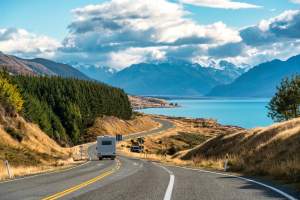It sounds like a gimmick. A hotel made entirely of ice? Beds carved from frozen blocks? A bar where the glasses are literally frozen solid? But spend a night in one of Norway’s legendary ice hotels, and you’ll realize it’s more than a photo op — it’s a surreal, sensory experience that challenges everything you thought you needed to feel comfortable.
Ice hotels in Norway aren’t built to last. They melt every spring and are rebuilt each winter from scratch. Which means every season is different, every design is original, and every room is a fleeting work of art. But the real surprise? How warm, personal, and downright cozy it can feel to sleep on a bed of ice in sub-zero temperatures — if you do it right.
Here’s what it’s actually like to spend the night inside an ice hotel in Norway — and why you should try it before it melts away.
The Big Picture: Where You Can Sleep in Ice
Norway has two main ice hotel experiences:
- Snowhotel Kirkenes (near the Russian border in the far north)
- Sorrisniva Igloo Hotel (outside Alta in Finnmark County)
Both are built anew every winter, usually opening in December or January and staying open until the spring thaw — typically April. Each hotel features dozens of ice rooms and suites, an ice bar, an ice chapel (yes, people get married there), and a warm lodge nearby for guests to thaw out if needed.
While Sweden’s ICEHOTEL may be more famous, Norway’s versions offer a more intimate, Arctic-focused experience — often bundled with dog sledding, snowmobiling, and aurora viewing.
First Impressions: Walking Into Another World
Stepping into an ice hotel is like entering a snow-globe version of a cathedral. Everything glows — softly lit walls, carved pillars, shimmering sculptures. The air is crisp but not painful. It’s quiet, muffled by layers of snow and ice, and the temperature inside hovers just below freezing — cold, yes, but not the kind of cold that bites.
Every room is different. Some are minimal, with clean ice walls and a blocky bed. Others are elaborate, with intricately carved themes: polar bears, Norse gods, abstract light sculptures. It’s part hotel, part art exhibit, part frozen dream.
And yes — everything is made of snow and ice, down to the furniture, chandeliers, and doorways.
The Room: Ice Bed, Real Sleep
Your room will likely include:
- A solid ice bed platform with a mattress and reindeer hide on top
- LED lighting embedded in walls or sculptures
- A thick, military-grade thermal sleeping bag rated for Arctic conditions
- A side table or decor made of ice
- No bathroom — that’s in the warm lodge nearby
Before bed, staff walk you through how to layer up, zip yourself in, and sleep properly. You don’t wear your outer clothes inside the bag — instead, dry thermals, wool socks, and a hat are recommended. Too many layers can actually make you colder by trapping moisture.
Surprisingly, most people sleep really well. It’s dead silent. There’s no light pollution. Your face might feel cold, but your body stays warm, swaddled in down and wool and reindeer hide.
The Morning Routine: Wake Up, Warm Up
There’s no snooze button in an ice hotel. Around 7–8am, staff knock gently and offer warm lingonberry juice to ease you out of your Arctic cocoon. You’ll likely shuffle to the warm lodge in slippers or boots, where you can shower, dress, and thaw out by the fire.
Breakfast is usually included — think Norwegian staples like cured fish, strong coffee, breads, and jam. And trust this: that first sip of hot coffee after a night on an ice slab hits different.
What You’ll Remember Most
- The silence — deeper than anything you’ll find in a city or even most cabins.
- The surreal glow — light reflects differently off frozen walls. It’s like sleeping inside a sculpture.
- The crisp air — clean, dry, and oddly soothing.
- The contrast — going from a frozen art installation to a warm fire-lit lodge is a thrill in itself.
- The novelty — but more than a gimmick, it genuinely feels like stepping into another element.
What You Won’t Find (and That’s Okay)
- No Wi-Fi in your ice room. The warm lodge will have it, but the point is to disconnect.
- No heating, obviously. Your comfort depends on layers and good gear.
- No long lounging. You won’t be watching movies in bed. This is a one-night, bucket-list experience — not a weeklong stay.
- No room service. Though the ice bar serves local spirits in frozen glasses, and the nearby restaurant often features local fare like king crab or Arctic char.
Add-Ons That Make It Even Better
Most ice hotels offer bundled experiences to round out your Arctic adventure:
- Dog sledding through the snowy wilderness
- Snowmobile safaris under the northern lights
- Aurora viewing cabins or domes
- Ice sculpting workshops
- Sauna + hot tub access for the ultimate contrast
Many visitors spend just one night in the ice room and the rest of their stay in a warm cabin or traditional lodge. It’s a smart balance — thrill and novelty without sacrificing comfort.
What It Costs
Expect to pay:
- $400–$700 USD per night for a standard ice room
- More for themed suites or packages including excursions and meals
It’s not budget travel — but it’s not just a bed. It’s a full, immersive experience. And for many, it’s a once-in-a-lifetime splurge that sticks in the memory far longer than a five-star resort.
What to Pack
- Dry thermal base layers
- Wool socks and gloves
- A good hat or beanie
- Moisturizer and lip balm (the air is dry and cold)
- Sleepwear that breathes but insulates
- Backup battery or power bank (batteries drain faster in the cold)
Most of what you need (sleeping bags, boots, outerwear) is provided or available to rent, so you don’t need to overpack — just be intentional.
Sleeping in an ice hotel isn’t about comfort in the traditional sense. It’s about contrast, awe, and stepping outside of what you think “hospitality” means. It’s part adventure, part installation art, and part ritual — a night where nothing is familiar, but everything is intentional.
You won’t come out of it bragging about thread counts or room service. You’ll talk about the glow of the walls, the surreal silence, the heat of the sauna afterward, and that feeling — that rare, primal feeling — of having experienced something completely different.
It melts every spring. It’s built fresh every year. And it’s waiting for you right now — before it becomes something only others have done.







